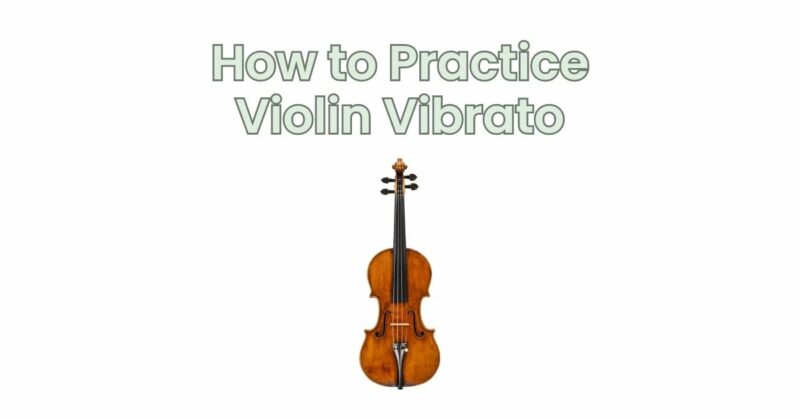Vibrato is a fundamental technique in violin playing that adds expressiveness, warmth, and richness to the sound. While vibrato may initially seem challenging, with proper guidance and consistent practice, you can develop a beautiful and controlled vibrato technique on the violin. In this comprehensive guide, we will explore step-by-step instructions and essential tips to help you practice and master the art of violin vibrato.
- Establish Proper Hand and Finger Position:
- Start by positioning your violin properly. Place the violin on your left shoulder with the chinrest resting comfortably against your jawbone. The left hand should be curved and relaxed, with the thumb lightly supporting the neck of the violin.
- Ensure your left-hand fingers are rounded and arched, hovering above the fingerboard. The fingertips should make firm contact with the strings for accurate intonation.
- Understand the Mechanics of Vibrato:
- Vibrato involves a slight oscillation of pitch by moving the finger back and forth while maintaining contact with the string. The motion originates from the forearm, allowing the finger to roll on the string.
- The finger’s contact point remains consistent during vibrato, and the motion primarily comes from the lower part of the finger, near the fingertip.
- Start with a Slow, Controlled Motion:
- Begin by placing your first finger on a note of your choice on the A or D string. It is recommended to start with a lower finger (e.g., first or second finger) for easier control.
- With a relaxed hand and finger, practice rocking the finger back and forth on the string in a slow and controlled manner. The motion should come from the forearm, and the finger should remain relaxed and flexible.
- Focus on maintaining an even, smooth, and controlled oscillation of the pitch without excessive tension or strain.
- Gradually Increase Speed and Intensity:
- Once you have established a comfortable and controlled motion, gradually increase the speed and intensity of your vibrato. Remember to maintain a relaxed hand and finger throughout the process.
- Pay attention to the width and depth of the oscillation, aiming for a full and expressive sound. Experiment with different speeds and intensities to develop your own personal vibrato style.
- Practice with Different Fingers and Strings:
- As you progress, practice vibrato with different fingers and on different strings. Each finger and string combination may require adjustments in finger placement, arm motion, and finger pressure.
- Start with simple exercises and scales, gradually incorporating vibrato into your repertoire pieces. Focus on accuracy, control, and consistency as you integrate vibrato into your playing.
- Seek Feedback and Guidance:
- Work with a knowledgeable violin teacher or mentor who can provide guidance, feedback, and corrections as you practice vibrato. They can offer valuable insights, identify areas for improvement, and help you refine your technique.
- Utilize video recordings of your practice sessions to visually analyze and assess your vibrato technique. Compare your technique with professional violinists and seek inspiration from their performances.
Conclusion:
Practicing and mastering vibrato on the violin requires patience, perseverance, and consistent effort. Start with proper hand and finger positioning, understand the mechanics of vibrato, and gradually increase speed and intensity. Practice with different fingers and strings, and seek feedback from a qualified instructor or mentor. With dedicated practice and attention to detail, you will develop a beautiful and expressive vibrato technique that adds depth and emotion to your violin playing. Remember to enjoy the process and embrace the journey of learning this essential violin skill.


